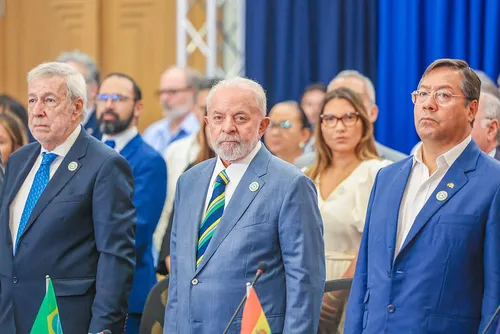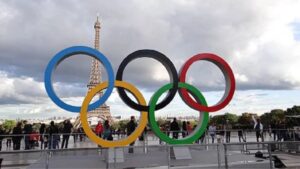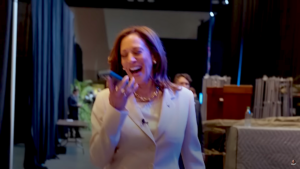
President Luiz Inácio Lula da Silva traveled to the Caribbean last week to participate in events from two important blocs for the region. In addition to official speeches, the Brazilian took advantage of the trip to strengthen relations with countries that have ceased to be at the center of Brazilian foreign policy in recent years.
The first stop was in Guyana. Lula spoke at the closing of the summit of the 46th Conference of Heads of Government of the Caribbean Community, Caricom. Lula met with the country’s president, Irfaan Ali. In a speech after the meeting, the two spoke of strengthening relations and establishing cooperation in strategic areas.
Guyana’s growth is one of the reasons for this approach. In 2020, the country recorded a GDP of US$5.5 billion (around R$27 billion). Three years later, the country ended 2023 with a current GDP of US$16.3 billion (R$80 billion). The International Monetary Fund (IMF) projection for 2026 is that this value will reach US$27.9 in 1 year. These prospects have grown due to the discovery of oil deposits in the country in recent years.
As a result, the Brazilian government began to project a closer commercial relationship with its neighbor to the north. According to ESPM International Relations professor Denilde Oliveira, this exponential economic growth in Guyana opens up the possibility of business for Brazilian industries.
“If we consider Guyana’s growth boom, there will be greater consumption. It is also close to an industrialization region like Manaus, which allows the export of industrial products. They also open up possibilities for the Caricom economies, which despite being smaller, have potential for advancement considering the history of Brazilian exports to these countries, which end up having a higher added value. But it also has service areas and other possibilities”, he says to Brazil in fact.
According to her, Brazil also looks at it from a strategic point of view, as the region already has partnerships with European countries, the USA and China. “It is natural for Brazil to position itself as a country that can be a partner and the location facilitates this process,” said Oliveira.
One of the points addressed by the two presidents was cooperation in the area of infrastructure, focusing on territorial integration between these two countries.
Today, the main integration route between Brazil and Guyana is the road that connects Boa Vista, in Roraima, with the port of Georgetown. But much of this road is still unpaved. For Denilde Oliveira, the rapprochement between countries at this time can bring prospects for projects that expand integration between countries.
“Brazil has a strong relationship with some South American countries and has been expanding the integration of the structure, and in the north of the country we have less. So it is necessary to include this physical integration with infrastructure projects within foreign policy. And it places Brazil as a country that reaffirms its leadership and resumes some cooperation actions in South America even with smaller partners. It’s a potential gain for foreign policy,” he says.
Professor of International Relations at UnB Roberto Goulart Menezes warns that, despite the projection of GDP growth in Guyana, oil extraction in the country is carried out by American companies.
“Guyana is experiencing dizzying growth. But this discovery was made by Exxon Mobil. So we need to know how this extracted wealth will be distributed. If these US companies extract it like any other commodity, they will take away all this wealth. So Guyana will have a nominal GDP and a very high per capita income, but this will not translate into well-being for the population,” Menezes told Brazil in fact.
Afterwards, Lula was in Saint Vincent and the Grenadines to give an opening speech at the summit of the Community of Latin American and Caribbean States, Celac. On the occasion, the PT member met with the president of Venezuela, Nicolás Maduro.
In the two events he was present at, Lula reinforced one of the main objectives of his third term: to regain his leadership position in the region.
The Brazilian spoke about the importance of regional integration, said the debate on global governance reform was important and addressed topics such as the fight against hunger and poverty.
For Menezes, this rapprochement with Caribbean countries had a positive impact on the government, not only from the perspective of economic integration, but also for political articulation with these countries in international organizations.
“Brazil has, since 2023, been rebuilding its foreign policy. And President Lula, when visiting Guyana, seeks to contribute to increased political interaction between the different countries in the region. Lula’s presence in the Caribbean conveyed Brazil’s message in the presidency of the financial G20. Celac is above all a political forum because it does not have a US presence and can coordinate positions in multilateral organizations. How will they vote at the UN, World Bank, WTO”, says Menezes.
According to history professor at the Federal University of Roraima Reginaldo Gomes, dialogue between Brazil and the Caribbean has always been distant despite being positive. An example of this is the relationship between Guyana and Brazil. According to him, this exchange has always been mainly guided by consulates.
“A paradiplomacia [relações internacionais lideradas por municípios ou estados] This is what favored us, based on discussion forums between Brazil, Guyana and Venezuela and meetings between businesspeople. Here on the border we have Brazilian consulates and these consuls negotiate these issues, in which Itamaraty does not participate”, he states.
The researcher understands that Lula’s presence in the region is important because it shows that Brazil, although it does not have a historical presence in the Caribbean, is concerned about the destiny of the region.
Mediation by Essequibo
During the trip, Lula was expected to speak with both Irfaan Ali and Maduro about the dispute over Essequibo. Brazil’s position as a regional mediator was one of the president’s objectives on this trip. Brasília has already hosted a conversation between representatives of Guyana and Venezuela and Celso Amorim followed the dialogue between the heads of state in São Vicente and the Grenadines. But Lula’s direct participation was still missing.
Lula’s only mention of the conflict occurred alongside Irfaan Ali. The Brazilian said he would personally thank the Prime Minister of Saint Vincent and the Grenadines, Ralph Gonsalves, for participating in the talks between Venezuela and Guyana in the dispute over Essequibo.
According to Denilde Oliveira, Lula’s lack of statements in this regard shows that the matter is still far from being closed.
“And even Lula’s participation has not yet gained enough weight to signal any agreement on the issue. And this is a doubt about the actions of the Brazilian government as a whole. How much will you actually be able to balance interests? This balance has not yet been achieved and this is where foreign policy still has some points, but there is international recognition that Brazil is capable of exercising this leadership. At the same time that we have not seen results, there are still doubts because Brazil’s position in relation to Maduro has been ambiguous,” he said.
Venezuelans approved a government referendum in December 2023 that asked whether they agree with Caracas’ decisions on how to deal with the territorial dispute.
With 160,000 km² and around 120,000 inhabitants, the territory of Essequibo is located on the border between Venezuela and Guyana and has been the subject of dispute since the 19th century. However, friction between Caracas and Georgetown over control of the region has intensified. after the discovery of large offshore oil wells off the Essequiba coast.
Editing: Rodrigo Durão Coelho
Source: www.brasildefato.com.br

